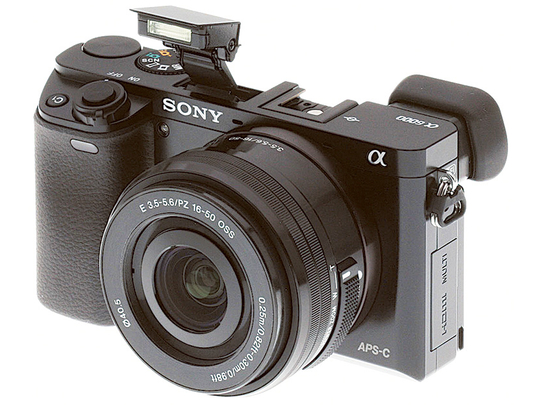
Sony’s a6000 — the company’s attempt to blend the functionality of a high-end camera with the portability and connectivity of a point and shoot — is an excellent idea on paper.
The a6000 — almost — lives up to expectations. It’s a solid multifunction camera that’s far lighter than most DSLR while retaining the advanced controls you — again, almost — never find on a point-and-shot.
The camera’s selling point is it allows the user most of the same functions you would find on a DLSR, such as the ability to select aperture or shutter speed priority. Additional dials, which you can control with your thumb, also let you adjust aperture and shutter speed if you want to go completely manual.
If those features sound like something more advanced than you are likely to use, remember, Sony is marketing this camera to amateur photographers.
Never fear though, the a6000 does come with the standard “green” position on the dial, the general auto mode for those who don’t know or care about aperture. The camera also comes with a “superior auto” mode, aimed at the reducing blurring and noise in lowlight situations.
Beyond those features, there were almost a couple of nice surprises.
It offers continual shooting at 11 frames-per-second, far beyond anything I’ve seen offered on a non-DSLR camera. For the record, the a6000 is mirrorless, so maybe this shouldn’t have come as a surprise. But it was. It’s nice to feel the camera firing away, making it better than most at capturing those fast-moving moments.
The camera also boasts a fast auto-focusing system. No argument there — it was fast — except when in continual shooting mode. Autofocus certain wasn’t as sharp after the first photo.
The second surprise was the camera’s warning system. Whether using the movable LCD display or the view finder, the camera was annoyingly good at telling when I was about to take a bad photo. Apparently, I have a knack for taking backlit photos.
I was originally confused about the LCD screen, which can rotate in a range of 135 degrees, but its uses quickly become clear. It allows you to still see what you’re aiming at even if you’re shooting over a crowd or hunched over a tripod.
While the hardware all seemed in good order, I was less than thrilled with some features of the software. To be fair, most of my complaints aren’t related to the camera’s core functionality, but since some of them are selling points, they are worth mentioning.
First, the WiFi functionality simply wasn’t. I tried to connect two different smartphones with the a6000, and the camera didn’t like either. While my smartphones connected easily to the a6000’s impromptu WiFi connection; the camera insisted it was “still connecting” and refused to send the photo. After two hours, it was just easier to break out the HDMI cable and manually copy the photos to a laptop. A firmware update is definitely in order.
The second issue is a cliché and applies to most kit lenses. The kits lens than comes with the a6000 isn’t worth the effort or money. It’s the kind of lens you would find on a cheat point-and-shot, a 16-50mm with F3.5-5.6. It will be great for family photos and selfies, but not much else. If you’re considering the a6000, make sure you factor in getting a more appropriate lens.












